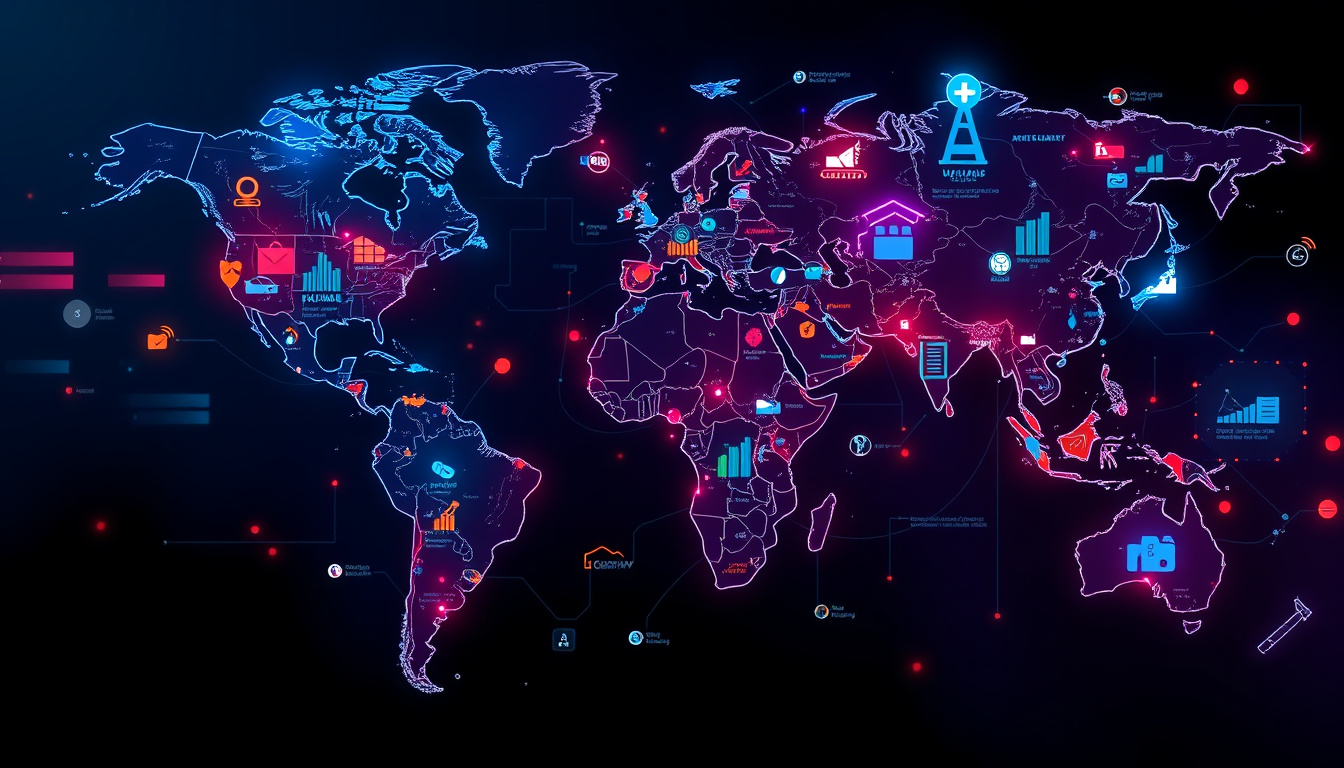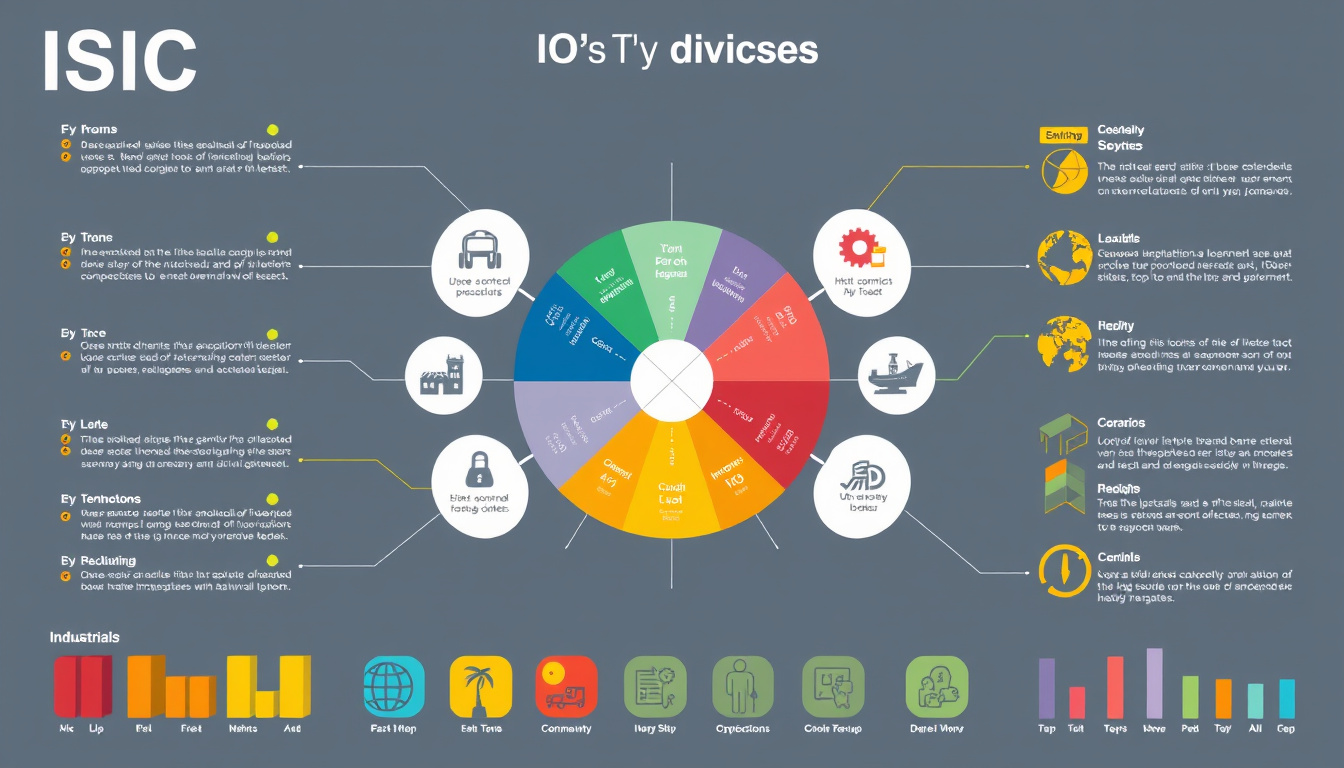When navigating the complex world of industry classification, ISIC revision plays a pivotal role in keeping classifications relevant and up-to-date. The International Standard Industrial Classification (ISIC) system is globally recognized for categorizing economic activities, helping governments, businesses, and researchers analyze economic data efficiently. Mastering the ISIC revision process is essential for anyone involved in economic analysis, policy-making, or business development.
In this guide, you’ll discover how to effortlessly understand and apply ISIC revisions, the benefits of staying current with classification standards, and tools that simplify this challenging task. By the end of this article, you will have a clear roadmap for mastering industry classification with ISIC.
What Is ISIC Revision and Why Does It Matter?
The ISIC revision refers to the update process of the ISIC system, which reflects changes in the global economic landscape. These revisions are made periodically to incorporate new types of activities, remove outdated ones, and improve categorization methods.
Why is this important?
- Accuracy: Ensures economic data remains relevant and reflective of modern industries.
- Comparability: Harmonizes data across countries and sectors, facilitating international economic analysis.
- Policy Improvement: Assists governments in designing targeted economic policies.
- Business Insight: Helps companies identify market opportunities and align their operations with global standards.
For example, the most widely used version today is ISIC Revision 4, which introduced refinements over previous versions to better capture emerging sectors like information technology and environmental services (source: United Nations Statistics Division).
Understanding the Structure of ISIC
Before diving into revision specifics, it’s crucial to understand how ISIC is organized. ISIC divides economic activities into a hierarchical structure consisting of:
- Sections: Broad economic categories such as Agriculture, Manufacturing, or Services.
- Divisions: Subcategories within sections that group similar industries.
- Groups: Further subdivisions focusing on more specific activities.
- Classes: The most detailed level, identifying precise economic activities.
For instance, in ISIC Revision 4, the Agriculture section (A) is broken down into divisions such as Crop and Animal Production, each further divided for granular classification.
Key Changes in ISIC Revision 4: What You Need to Know
ISIC Revision 4, introduced in 2008, represents the most recent comprehensive update, highlighting the importance of the ISIC revision process. Key features include:
- Inclusion of Emerging Industries: Reflects new types of economic activities, especially in the service sector and technology-driven areas.
- Refined Definitions: Provides clearer descriptions and criteria for classification, reducing ambiguity.
- Enhanced Compatibility: Better alignment with other international classification systems such as NAICS and NACE.
- Environmental Considerations: Incorporates classifications for environmental goods and services, emphasizing sustainability.
Keeping pace with these revisions ensures organizations can compare data seamlessly across borders and over time — a critical capability in today’s fast-changing economies.

How to Master ISIC Revision Efficiently
Mastering ISIC revision can feel daunting due to the extensive documentation and detailed classifications involved. Here are actionable steps to streamline your expertise:
1. Study the Official ISIC Documentation
The United Nations Statistics Division provides detailed manuals and explanatory notes for each revision. Dedicate time to thoroughly reviewing these resources to build foundational knowledge.
2. Use Reliable Classification Tools
Manually searching through classification codes can be time-consuming and prone to errors. Leveraging digital classification services such as Classifast.com can save you valuable time. This Instant Classifier allows you to input any text description and quickly receive accurate ISIC codes along with other classification standards like UNSPSC, NAICS, and HS codes.
3. Attend Workshops and Training
Participate in workshops or online courses offered by statistical agencies or international organizations. These sessions often focus on practical applications of ISIC and explain nuances in revisions.
4. Keep Updated with Revision Announcements
Subscribe to newsletters or follow authoritative sources to stay informed about upcoming ISIC revisions or related changes.
The Role of Classifast.com in Simplifying ISIC Revision
One of the challenges in mastering ISIC revision lies in accurately mapping textual industry descriptions to corresponding classification codes. Here’s where Classifast.com shines:
- Instant Classification: Paste any industry or product description, and receive immediate ISIC codes.
- Multi-Standard Support: Besides ISIC, get codes for UNSPSC, NAICS, ISIC, ETIM, and HS, enabling comprehensive classification coverage.
- Search and Compare: Easily search and compare across different classification systems for better decision-making.
- User-Friendly Interface: Designed for professionals without deep statistical expertise, making industry classification accessible to all.
Using Classifast.com in your ISIC revision strategy drastically reduces the risk of misclassification, ensuring data consistency and accelerating reporting processes.
Benefits of Proper ISIC Classification for Businesses
Correct use of ISIC codes yields numerous benefits for companies, such as:
- Improved Market Analysis: Identifying competitors and market trends by industry classification.
- Regulatory Compliance: Meeting government and trade requirements tied to specific economic activities.
- Enhanced Reporting: Facilitates accurate economic and financial reporting as required by investors and stakeholders.
- International Trade Facilitation: Aligns business activities with global standards, smoothing cross-border transactions.
Common Challenges During ISIC Revision and How to Overcome Them
Professionals working with ISIC revisions often encounter these difficulties:
- Complexity of Codes: Navigating thousands of detailed classes.
- Ambiguous Activity Descriptions: Deciding which class fits where, especially for niche businesses.
- Keeping Up with Changes: Staying current as updates are released.
Overcoming these requires a combination of solid foundational learning, use of smart tools like Classifast.com, and continuous professional development.
FAQ: ISIC Revision Essentials
Q1. What is the difference between ISIC Revision 3 and Revision 4?
A: Revision 4 offers more detailed classifications and includes new sectors such as information technology and environmental services not fully covered in Revision 3. It also improves compatibility with other classification systems.
Q2. How often does the ISIC revision process occur?
A: The revision is not on a fixed schedule but typically happens every 10 to 15 years to reflect significant economic changes.
Q3. Can I use ISIC codes for international trade classification?
A: While ISIC focuses on economic activity classification, it complements systems like the Harmonized System (HS) for trade. Tools like Classifast.com help correlate these standards efficiently.
Conclusion: Take Control of Industry Classification Today
Mastering ISIC revision is invaluable for anyone involved in economic data analysis, policy development, or business strategy. By understanding the structure of ISIC, staying updated with revisions like Revision 4, and leveraging tools such as Classifast.com, you can ensure accurate classification and make informed decisions that drive success.
Ready to simplify your industry classification process? Visit Classifast.com now to experience instant, precise classification across multiple international standards—your shortcut to mastering ISIC revision with ease. Don’t let complex codes slow you down; take control today and elevate your classification accuracy to the next level.








